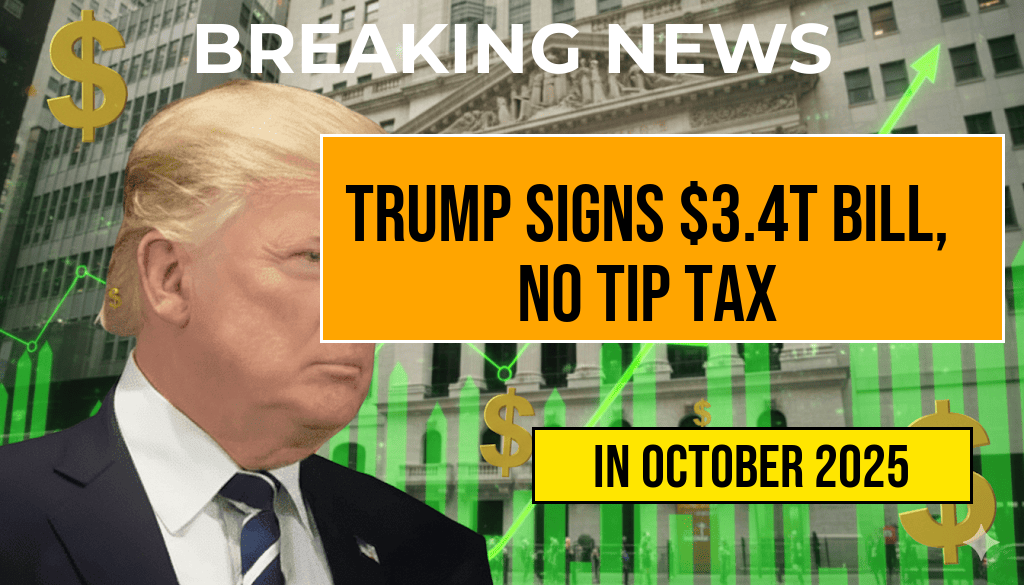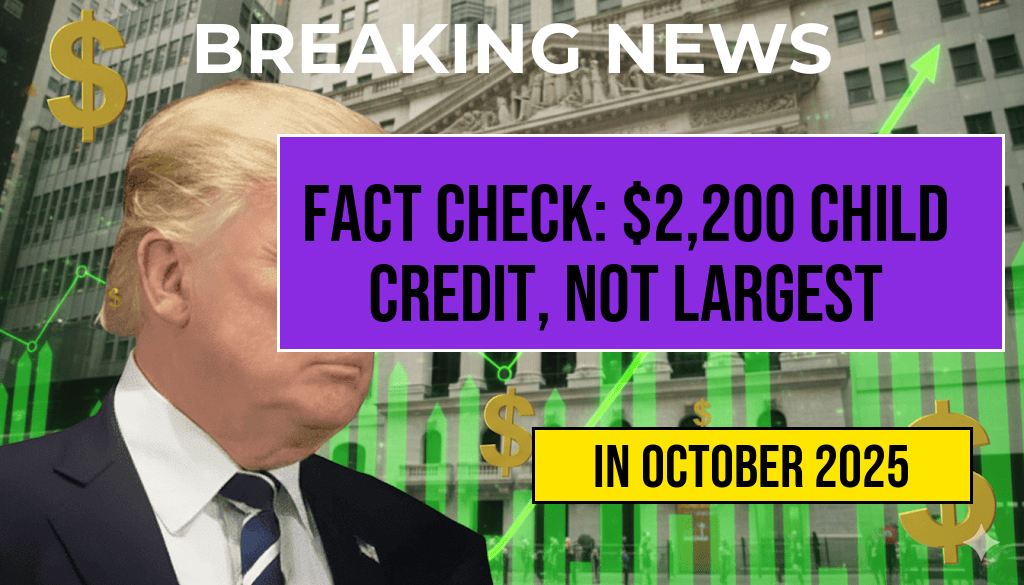President Donald Trump has signed into law a sweeping $3.4 trillion legislative package, marking one of the most significant fiscal moves of his administration. The bill, which includes provisions that will increase the national debt by approximately $4 trillion, aims to fund a range of government initiatives, infrastructure projects, and social programs. Notably, the legislation explicitly promises **no tax on tips**, a measure that seeks to ease concerns among service industry workers. The move comes amid ongoing debates over fiscal responsibility and the federal budget, raising questions about long-term economic impacts while illustrating the administration’s priorities on economic growth and worker protections.
Details of the $3.4 Trillion Legislation
The newly signed bill encompasses a broad spectrum of funding allocations, totaling $3.4 trillion. It is designed to bolster infrastructure, healthcare, education, and defense, with significant investments aimed at stimulating economic recovery and addressing longstanding national priorities. The legislation also allocates funds for pandemic relief efforts, climate resilience, and technological innovation.
| Category | Amount (in billions) |
|---|---|
| Infrastructure and Transportation | $1,200 |
| Healthcare and Public Health | $700 |
| Education and Workforce Development | $500 |
| Defense and National Security | $600 |
| Climate and Environmental Initiatives | $200 |
| Pandemic Response and Preparedness | $200 |
Debt Implications and Fiscal Impact
The legislation’s passage is expected to increase the federal debt by roughly $4 trillion, driven by new spending measures and existing budget deficits. Economists are divided on the long-term consequences; proponents argue that such investments are necessary to stimulate economic growth, while critics warn of escalating debt burdens that could hamper future fiscal stability.
According to the Congressional Budget Office (CBO), this level of deficit expansion could influence interest rates and borrowing costs in the coming years. However, supporters contend that the economic stimulus provided by the bill could offset some of these concerns through job creation and increased consumer spending.
The “No Tax on Tips” Provision
A notable feature of the legislation is the explicit guarantee that **service workers will not face additional taxes on their tips**. This measure aims to protect workers in sectors like hospitality and food service from potential tax increases, aligning with the administration’s focus on supporting middle- and lower-income Americans. Critics, however, question whether this provision will significantly impact overall tax revenues or if it serves more as a political statement.
Tax experts note that tips are often a substantial part of workers’ income, and safeguarding them from taxation can have implications for payroll tax collections and overall federal revenue. Nonetheless, the measure is framed as a victory for service industry employees, many of whom rely heavily on tips for their livelihood.
Political Reactions and Public Response
The bill has elicited mixed reactions across the political spectrum. Supporters argue that the legislation is a vital step toward economic revitalization, emphasizing the importance of infrastructure investment and social programs. House Speaker Kevin McCarthy praised the move, stating, “This bill delivers on our promise to rebuild America and support hardworking Americans.”
Opponents, however, express concern over the scale of increased borrowing and the potential for future inflation. Democratic leaders have criticized certain provisions, particularly the debt increase, warning of the risks posed by accumulating such a large deficit. Senator Elizabeth Warren remarked, “We must be cautious about increasing our national debt without clear plans for fiscal responsibility.”
Public opinion polls suggest a divided response, with many Americans expressing support for infrastructure development but apprehension over rising debt levels. The debate highlights ongoing tensions regarding fiscal policy priorities and the balance between economic stimulus and long-term stability.
Broader Economic Context
The legislative move arrives at a time of economic uncertainty, with inflation rates fluctuating and the labor market showing signs of resilience. The bill’s investments are positioned as critical to maintaining momentum, especially as the U.S. navigates post-pandemic recovery challenges.
Analysts from institutions such as Forbes have highlighted that while increased borrowing may raise concerns, strategic spending on infrastructure and innovation can generate multiplier effects, potentially leading to higher productivity and sustained growth.
For more on the federal budget process and debt implications, see [Wikipedia’s article on the United States federal budget](https://en.wikipedia.org/wiki/United_States_federal_budget) and [Forbes’ analysis of fiscal policy](https://www.forbes.com/sites/johnschwartz/).
Frequently Asked Questions
What is the total value of the mega-bill signed by Trump?
The mega-bill signed by Trump is valued at $3.4 trillion, making it a significant legislative package.
How much will the national debt increase as a result of this bill?
The bill is projected to increase the national debt by approximately $4 trillion.
Does the bill include any provisions to tax tips?
No, Trump has promised that there will be no tax on tips included in the legislation.
What are the main components or purposes of the mega-bill?
The mega-bill encompasses various measures, including economic stimulus, infrastructure spending, and public health initiatives.
When was the mega-bill signed into law?
The bill was recently signed into law by Trump, marking a significant legislative action.






